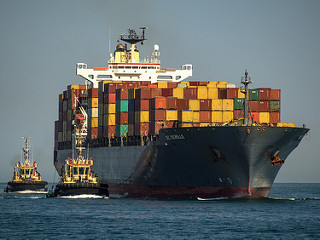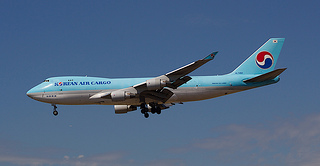A Look at Why Ocean Cargo Rates Are Falling Fast

In 2015, ocean cargo rates for contracts on major East-West routes saw a sharp decline. As a result, carrier profits have been suffering. Contract rates have fallen because of lower fuel costs, more carrier competition, and surplus vessel capacity. Take a look at what this means for the transportation industry now and in the future.
Supply Vs. Demand
The biggest reason that ocean cargo rates have fallen is carrier competition. In 2015 there was a major influx of new container ship vessels with massive capacity, especially on the Far East to Europe trade routes. This has created a situation where there is more supply than demand. Container ships are struggling to meet capacity because there are so many ships. This has caused ocean cargo carriers to lower their rates in the hopes of gaining customers based on reduced prices.
The Drewry Benchmarking Club has been monitoring the situation and states that between May and August there was a 7 percent decrease in contract rates. This reflects a huge drop in a normally stable market.
The Future of Ocean Cargo Rates
Analysts predict that the ocean cargo rates will eventually catch up, but not while more container ships are still joining the market. Phillip Damas, a director at Drewry Benchmarking Club, said, “We expect contract rates to fall further through the remainder of this year, given falling fuel costs and continued overcapacity in the market.”
Peter Sand, Chief Shipping Analyst at BIMCO stated, “Striking the right level of supply to match the actual demand for transportation on this key container ship route has proven impossible recently. The reactivation of almost the entire idle fleet during the autumn, in combination with the continued inflow of new ultra-large container ships, has developed a situation where overcapacity sours the freight market.”
Additional Factors to Falling Ocean Cargo Rates
The decline in ocean cargo rates is not due entirely to high capacity and low demand. Low fuel costs are also to blame. Fuel costs vary by season and market conditions, but there was a sharp decrease in the price of fuel in 2015 overall. This seems like good news for cargo ships, but it has actually allowed smaller carriers to compete better and cause larger carriers to lose business. Prior to the decline in ocean cargo contract rates, carriers were granting temporary reductions in contract rates just to gain more businesses due to this new competition.
Another factor that has contributed to the decrease in ocean cargo rates is China’s export market. China’s economy has been slowing for a few years now. The nation is no longer the only preferred place to go to outsource the production of goods. Many countries are looking for solutions closer to home. Smaller countries like Thailand are also becoming bigger exporters of goods. Ocean cargo carriers are readjusting routes to accommodate these changes, which further affects contract rates.
Ocean cargo carriers are suffering, but consumers are seeing lower prices on goods. The demand will eventually catch up to supply, but this will take more time.





